Early Verdict
The Crucial BX300 480GB delivers very good performance under heavy workloads. The drive compares well to the 850 EVO in lighter workloads, but it falls well short in the warranty category. The BX300 fits in at the upper tier of the 512GB class but isn't the best dollar for dollar.
Pros
- +
Daily use application performance
- +
Exceptional mixed workload and steady state performance
- +
Crucial software package
Cons
- -
Poor pricing
- -
Short warranty
Why you can trust Tom's Hardware
Features & Specifications
The newest SSDs coming to market prove that Samsung's dominance in the SATA SSD space is starting to fade. Earlier this month, we saw the Western Digital Blue 3D and SanDisk Ultra 3D close the performance gap in the 1TB class. Today, we'll see if the new Crucial BX300 can accomplish the same feat in the 512GB and 256GB classes.
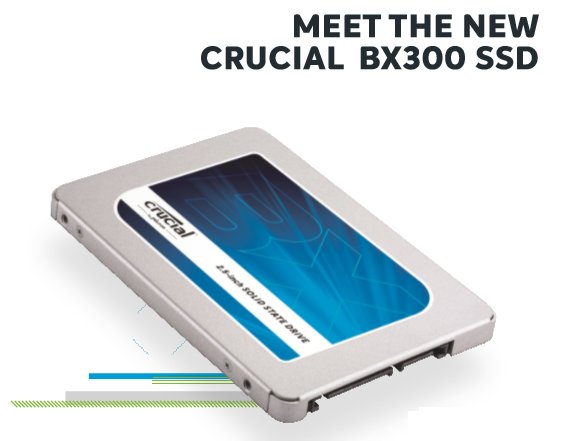
Crucial took a different path to reach 850 EVO-like performance, but it's a tactic we didn't expect. The new BX300 uses Micron's first-generation 3D MLC flash. This is when you look back at the title to check for a typo. Yes, we are really talking about the new entry-level BX series with 3D MLC. We are just as confused as you are; this is the same flash we've criticized due to its low performance in consumer products.
For the last few years, Crucial has produced two product lines. Crucial usually arms the BX series with TLC flash and entry-level pricing, while the MX series typically ships with faster MLC flash for mainstream use. In the new third generation, Crucial reversed the roles and the new BX300 slots into the mainstream position.
This isn't the first time the Crucial's BX SSDs have outperformed its MX series. Crucial's first generation BX SSDs matched the lower-cost MX100 and even outperformed it in many consumer-focused workloads. Today history repeats itself, but with a strange MLC flash twist. All the fab-powered manufacturers proclaimed MLC is dead for consumer SSDs just a few short months ago, but now we've got a new consumer MLC SSD for the entry-level market. Did we just pass into Bizarro Land, or did Crucial finally decide to fight back against the Samsung machine?
Specifications
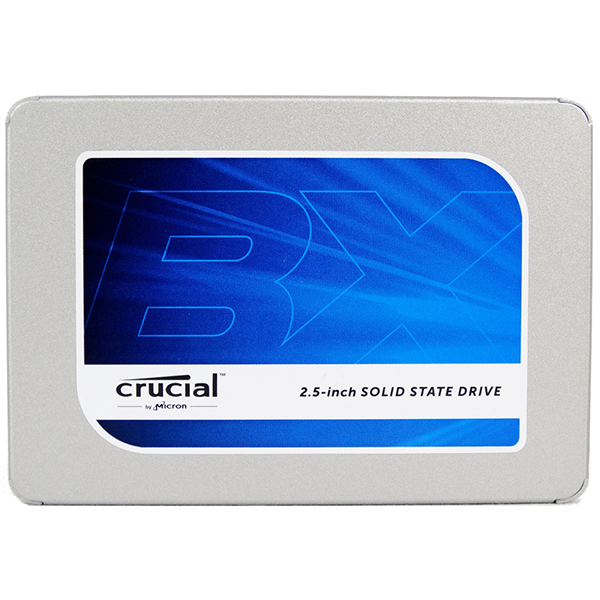


The flash isn't the only change Crucial made to the BX series. Crucial released the BX100 and BX200 in capacities up to 1TB, but the new BX300 series only scales up to 480GB at launch. The company usually doesn't update the capacity range midway through production, but we did see a 2TB MX300 appear shortly after the MX's official launch.
The BX300's hardware configuration is similar to the Adata SU900 and XPG SX950. We tested the XPG SX950 that retailed for $249.99 at launch, but now it sells for $214.99. We liked the Adata SX950, but its price moved the drive into a class that the performance couldn't justify.
The BX300 uses an SMI SM2258 four-channel controller, Micron DDR3 DRAM, and Micron's first-generation 3D 256Gbit MLC NAND. We don't understand what took Crucial so long to bring this product to market. This configuration has already been available for a few years, but Crucial's model may have more advanced firmware.
Crucial claims sequential read/write performance reaches 555/510 MB/s for all three capacities. Random write performance weighs in at 90,000 IOPS, but that's when the SLC cache soaks up the incoming data. Random read performance improves with higher capacity models. The BX300 120GB reaches 45,000 IOPS, but it scales to 84,000 and 95,000 IOPS for the 240GB and 480GB drives, respectively.
Features
- Multistep Data Integrity Algorithm
- Thermal Monitoring
- SLC Write Acceleration
- Active Garbage Collection
- TRIM Support
- Self-Monitoring And Reporting Technology (SMART)
- Error Correction Code (ECC)
- Device Sleep (DEVSLP) Extreme Low Power Mode
Most of the BX300's features are fairly straightforward, but one feature is quite a bit different for an SM2258-based product. The drives feature a fixed SLC cache capacity that comes out to 4GB (120GB), 8GB (240GB), and 16GB (480GB).
Pricing, Warranty & Endurance
The Crucial BX300 starts out at $59.99 (120GB) then makes the expected progressive leaps to $89.99 (240GB) and $149.99 (480GB). At the time of writing, the 480GB model sells at Newegg for the same price as the Samsung 850 EVO 500GB. The 850 EVO 500GB is the dominant product, so we don't feel this is a good pricing model even if the BX product series can match the EVO's performance.
Crucial backs the BX300 with a three-year warranty and a low endurance rating that varies based upon capacity. We recently tested the Drevo Ares 256GB that uses the same 256Gbit Gen 1 3D MLC NAND, but it comes with a 350 TBW endurance rating while the BX300 256GB has an 80 TBW rating. The Adata XPG SX950 240GB, which has the same hardware configuration as the BX300, features a 200 TBW rating.
The 850 EVO 500GB carries a five-year limited warranty and a 150 TBW endurance rating, which is lower than Crucial's 480GB model with 160 TBW.
Software
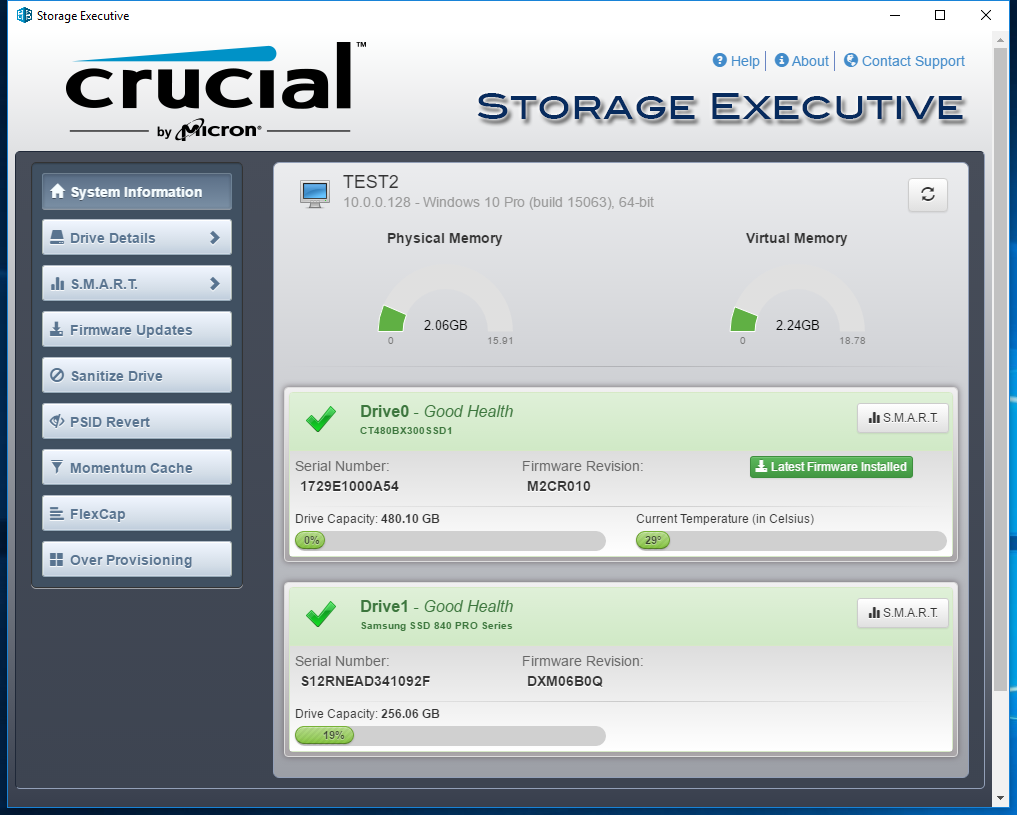
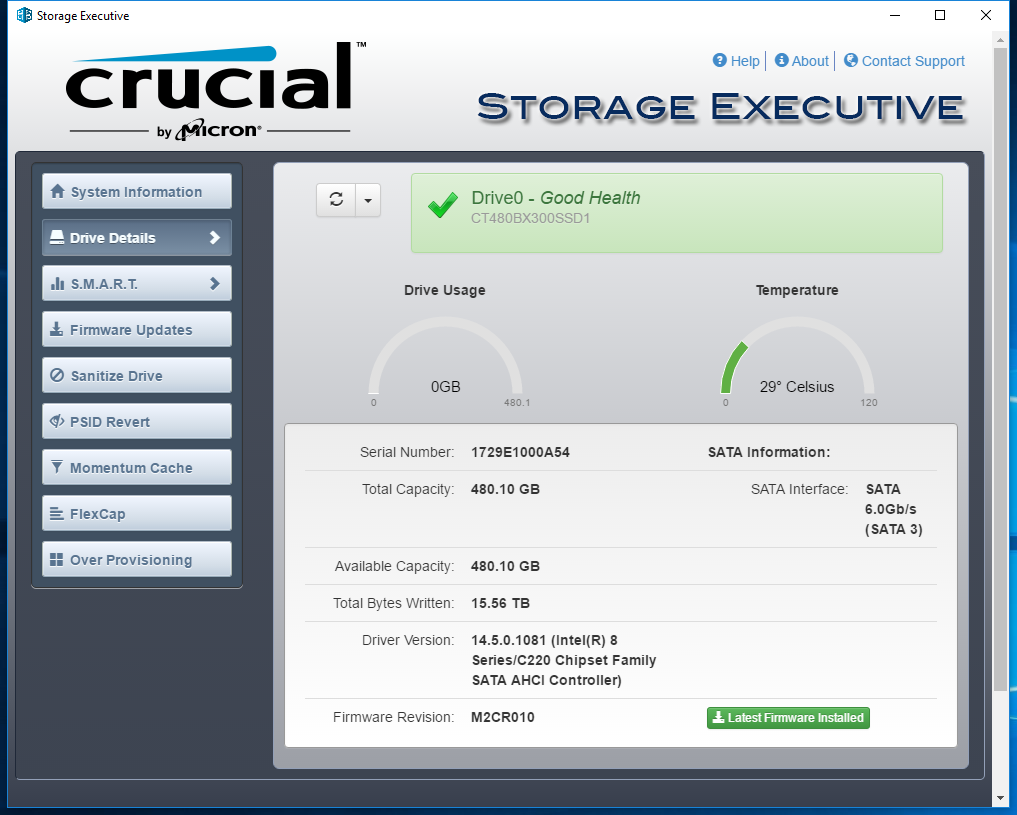
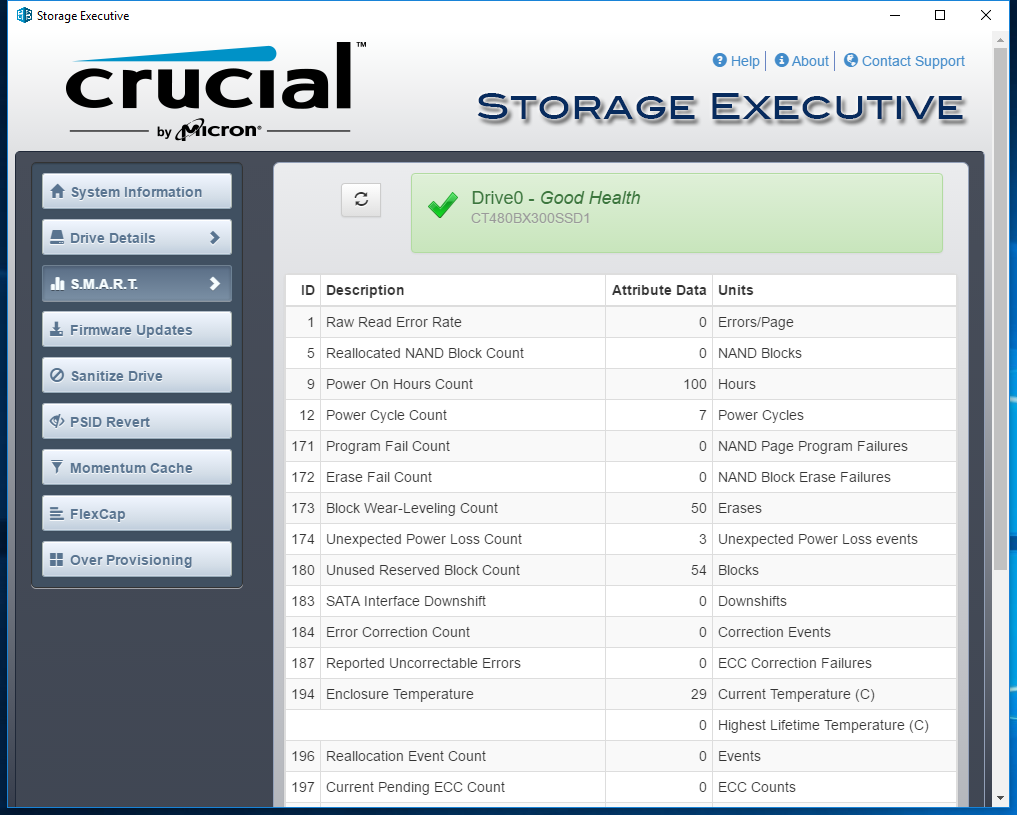
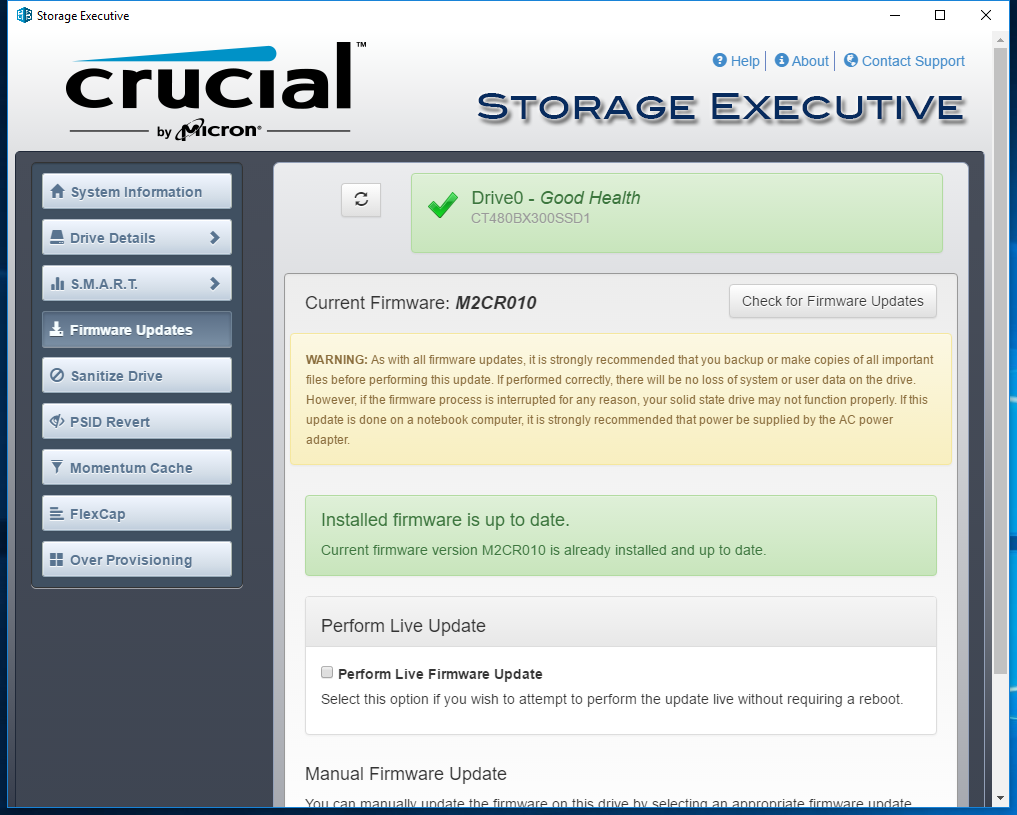
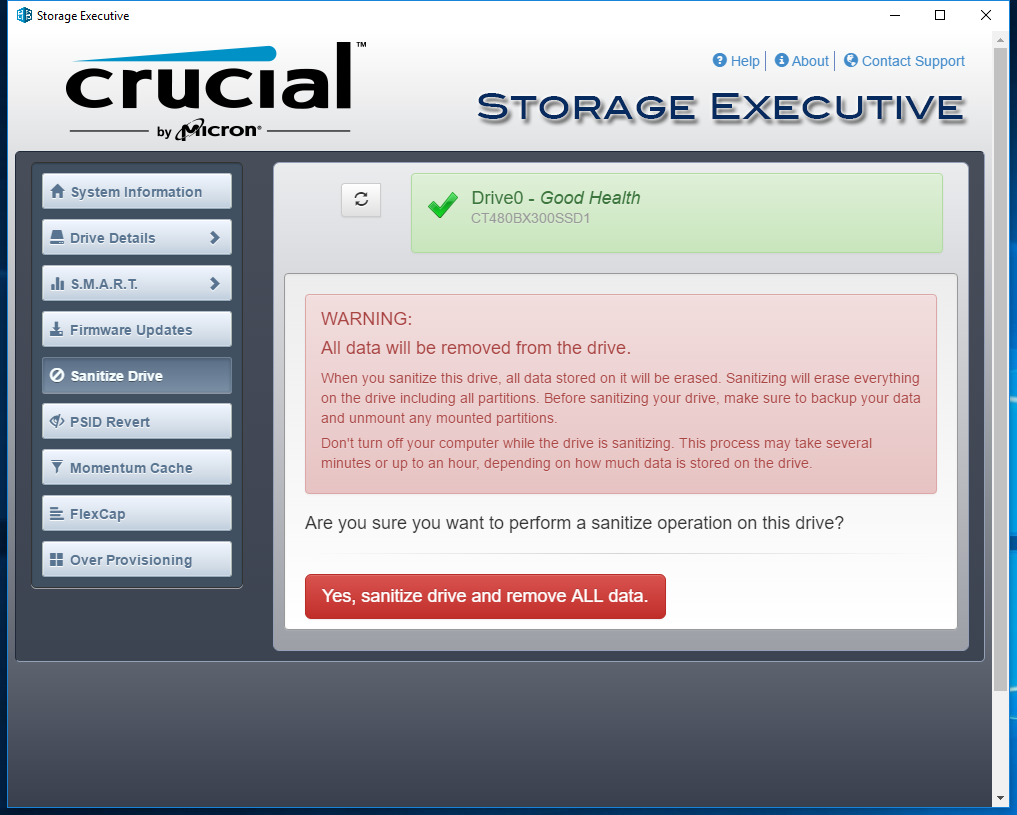
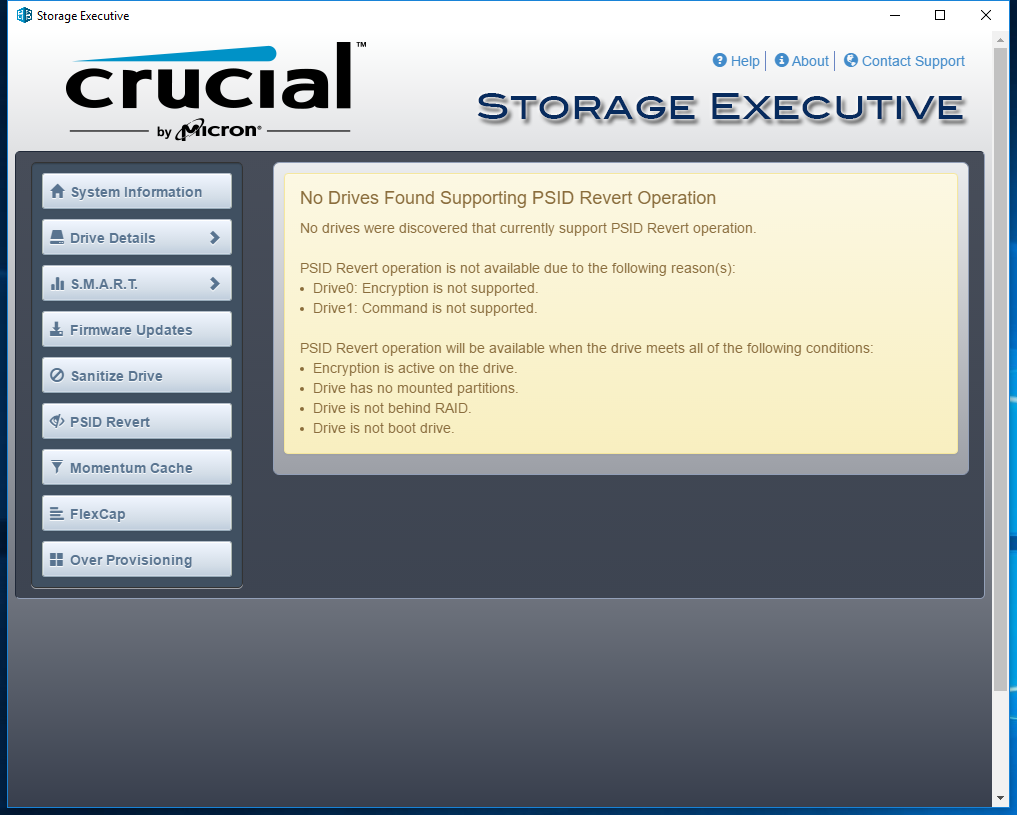
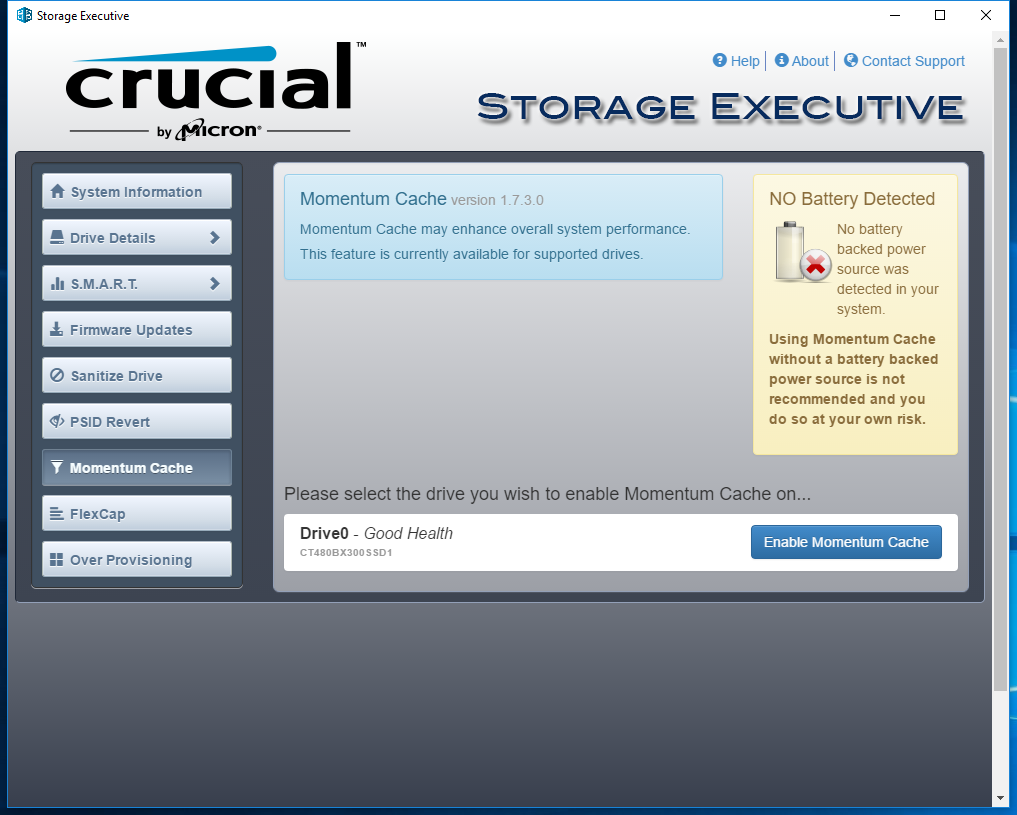
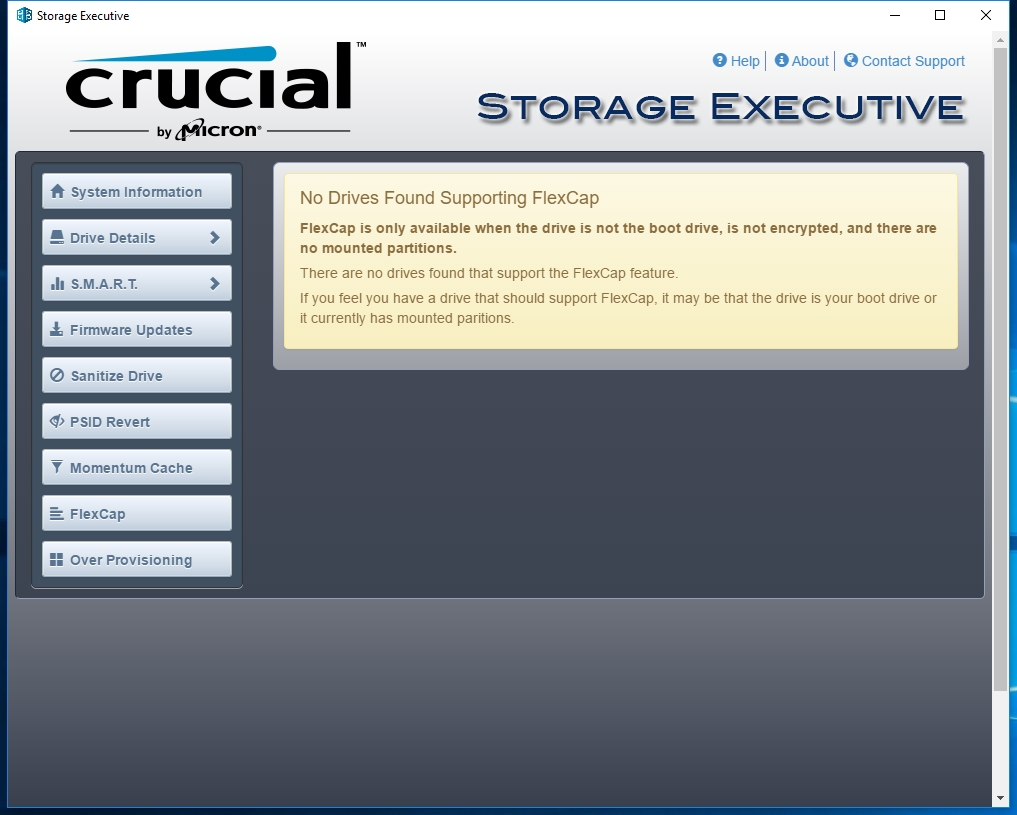
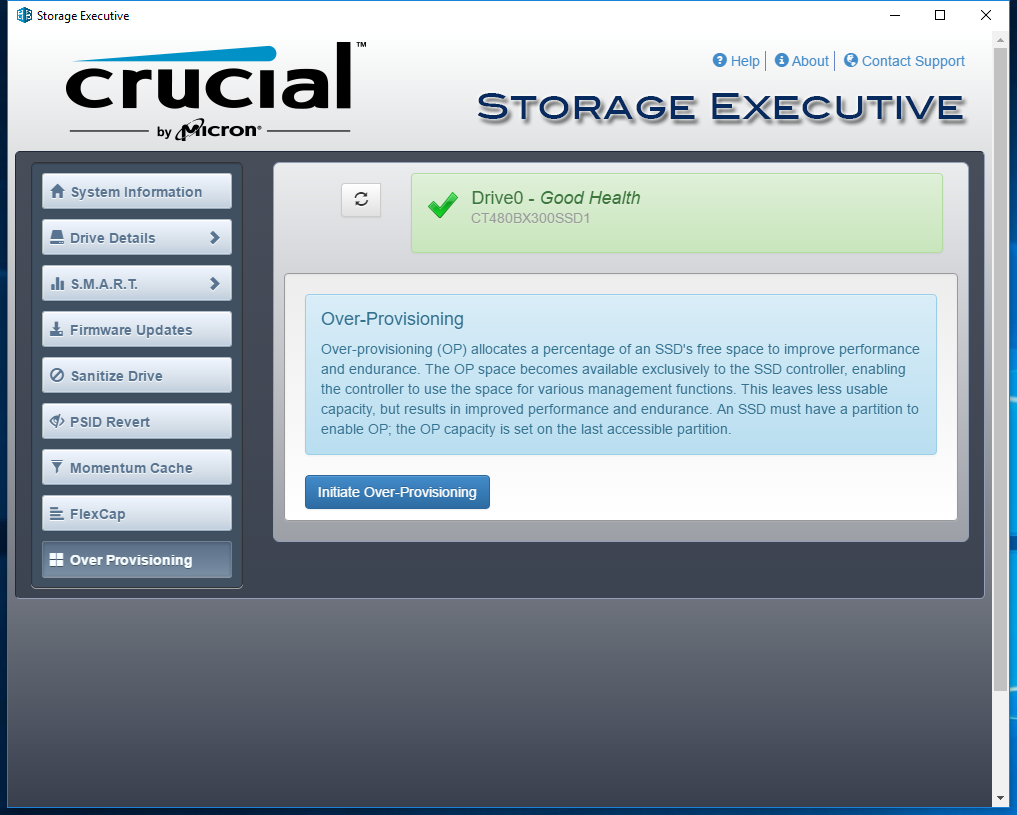
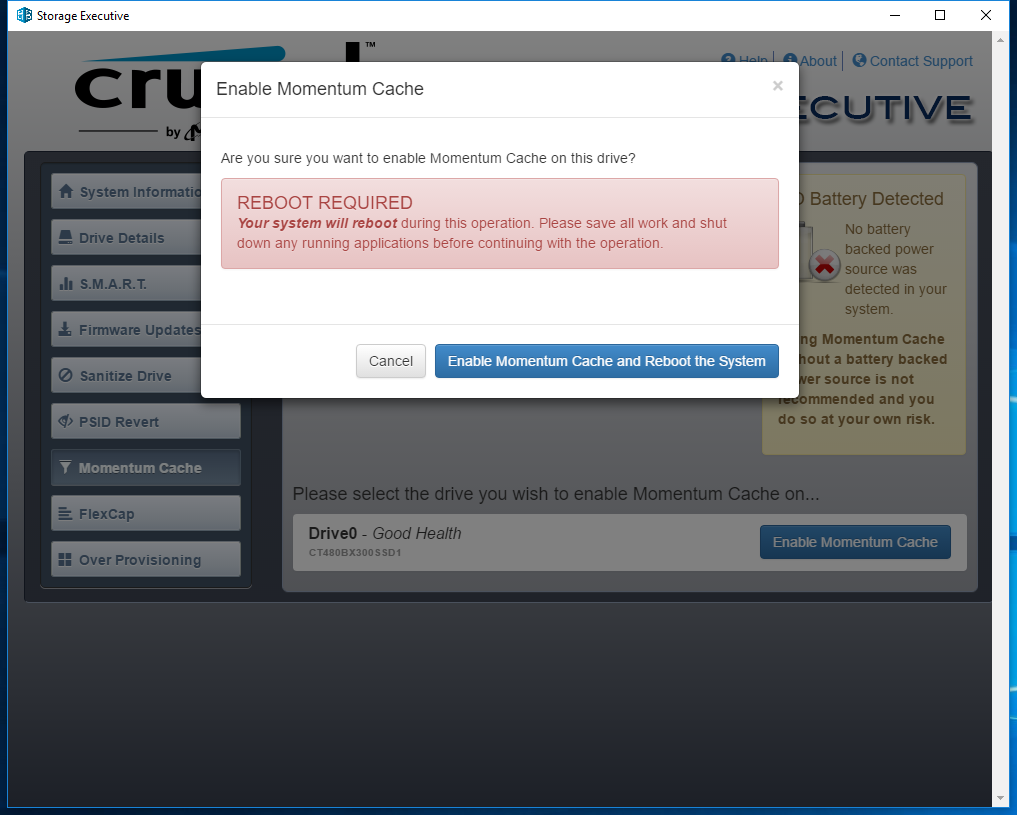
The Crucial BX300 includes the company's special Storage Executive SSD management software. The software is one of the best available, but it only works with Crucial SSDs. It's also the only way to enable Crucial's Momentum Cache DRAM caching feature. The feature reduces flash wear by using a portion of the system memory to absorb incoming random write data. The software then flushes the data to the SSD as a less-destructive sequential transfer. The software also uses system memory to cache frequently-accessed data, which increases read performance.
Crucial also includes a code for Acronis True Image HD. You can use this software to clone your existing data to a new drive.
Packaging
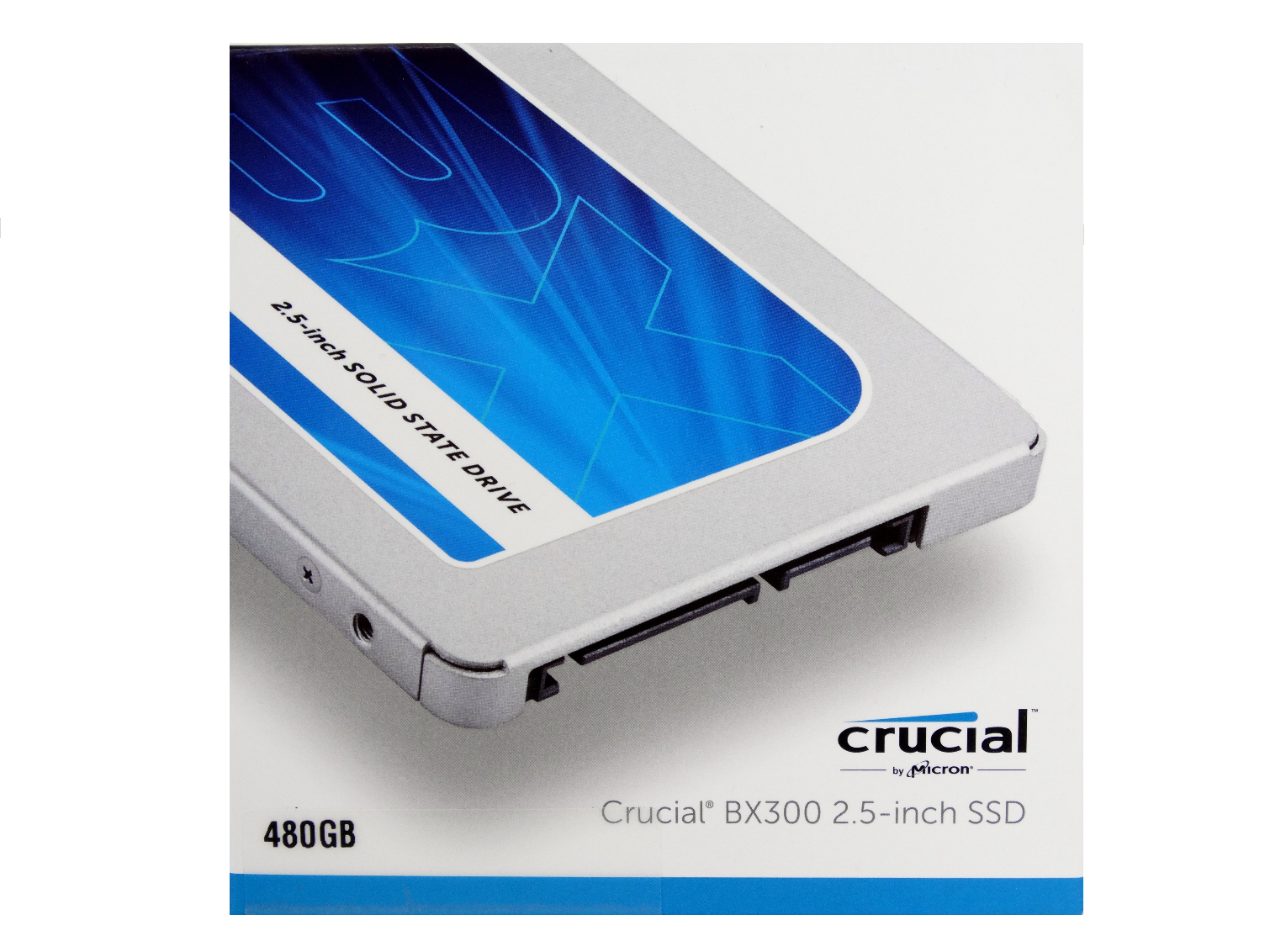
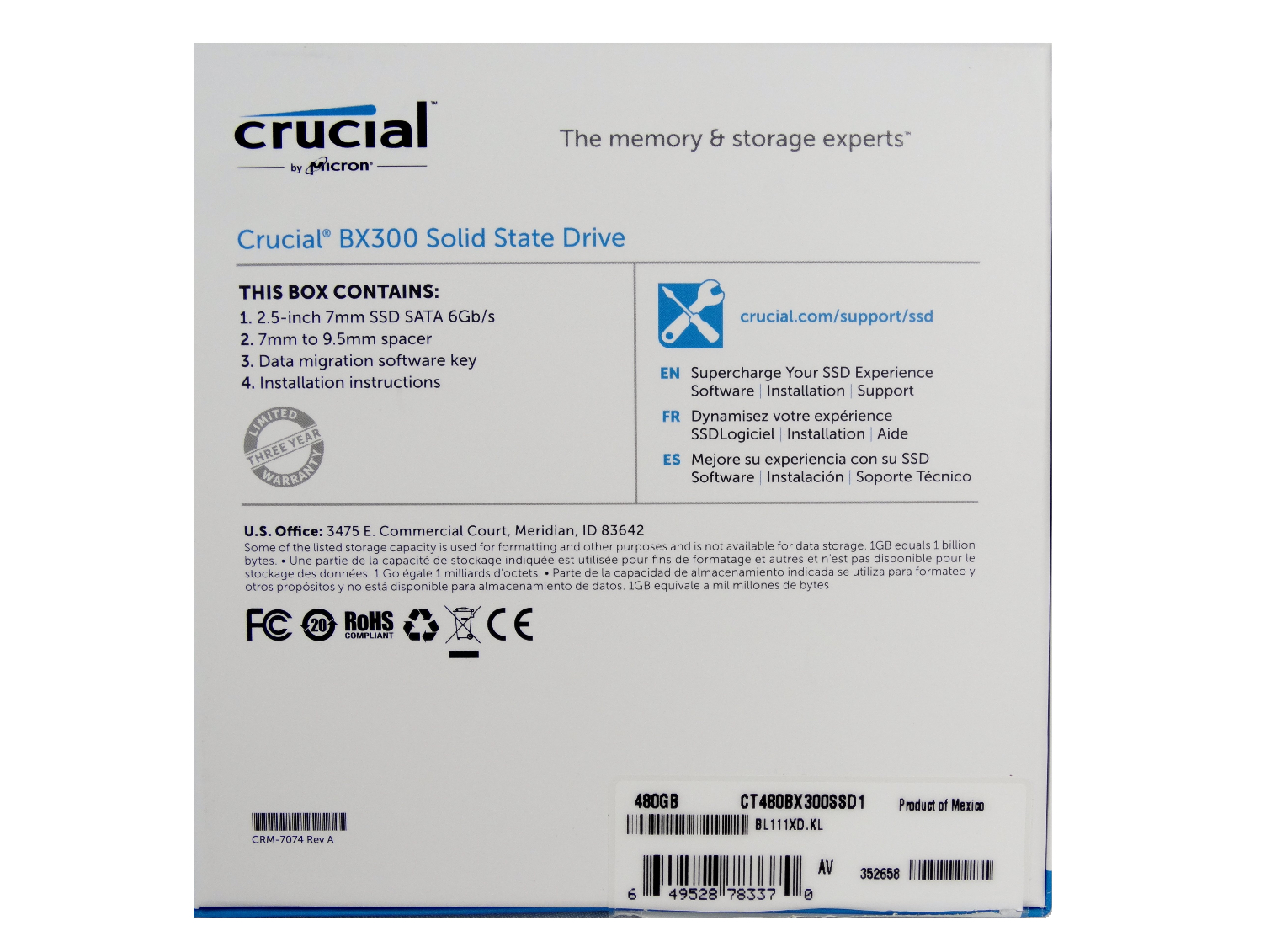
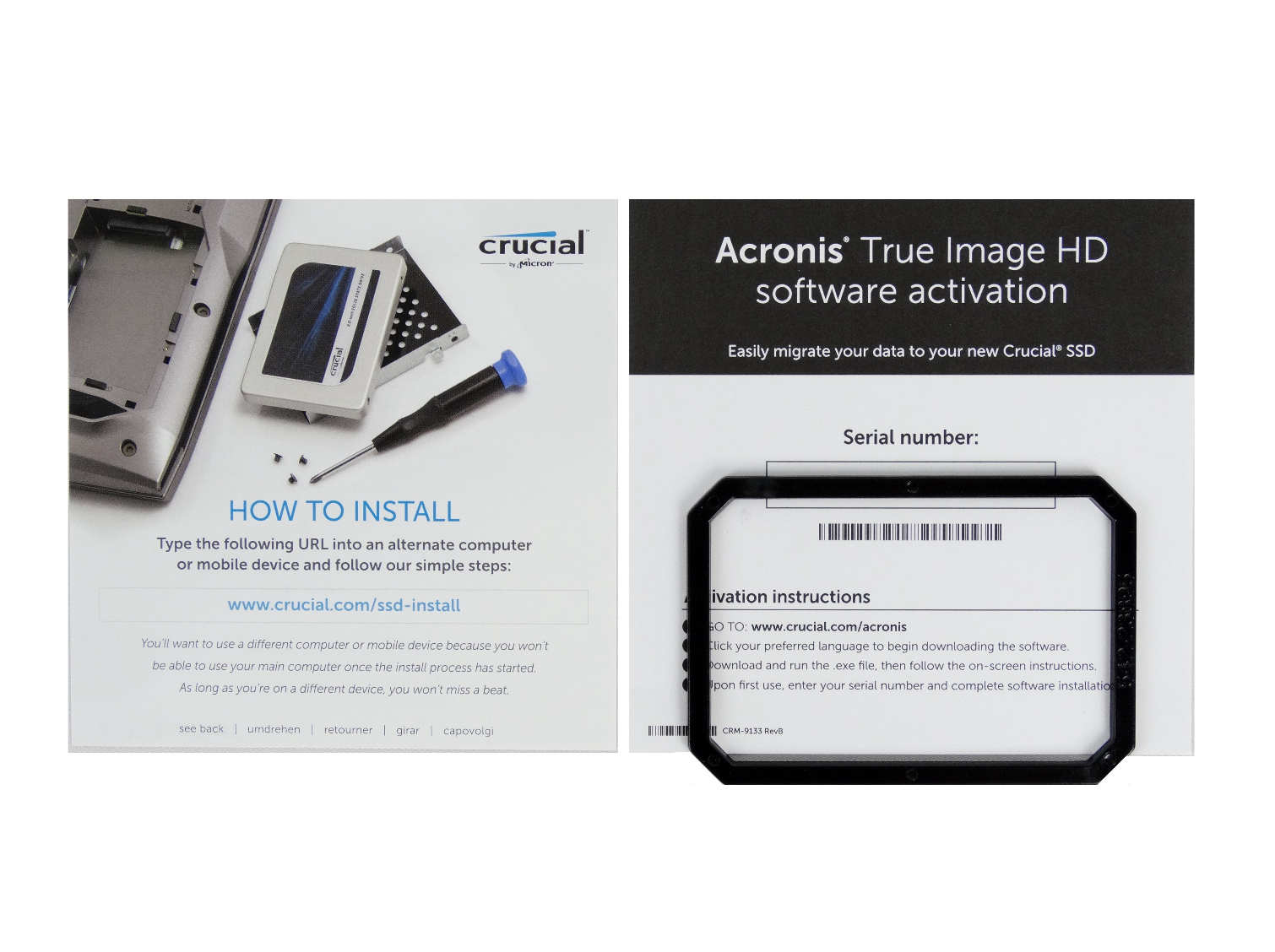
The Crucial SSD packaging hasn't changed much over the last several years. The package doesn't list any performance data, and that makes it difficult for retail shoppers to compare products in a store. Crucial does list the warranty and the accessory package.
A Closer Look
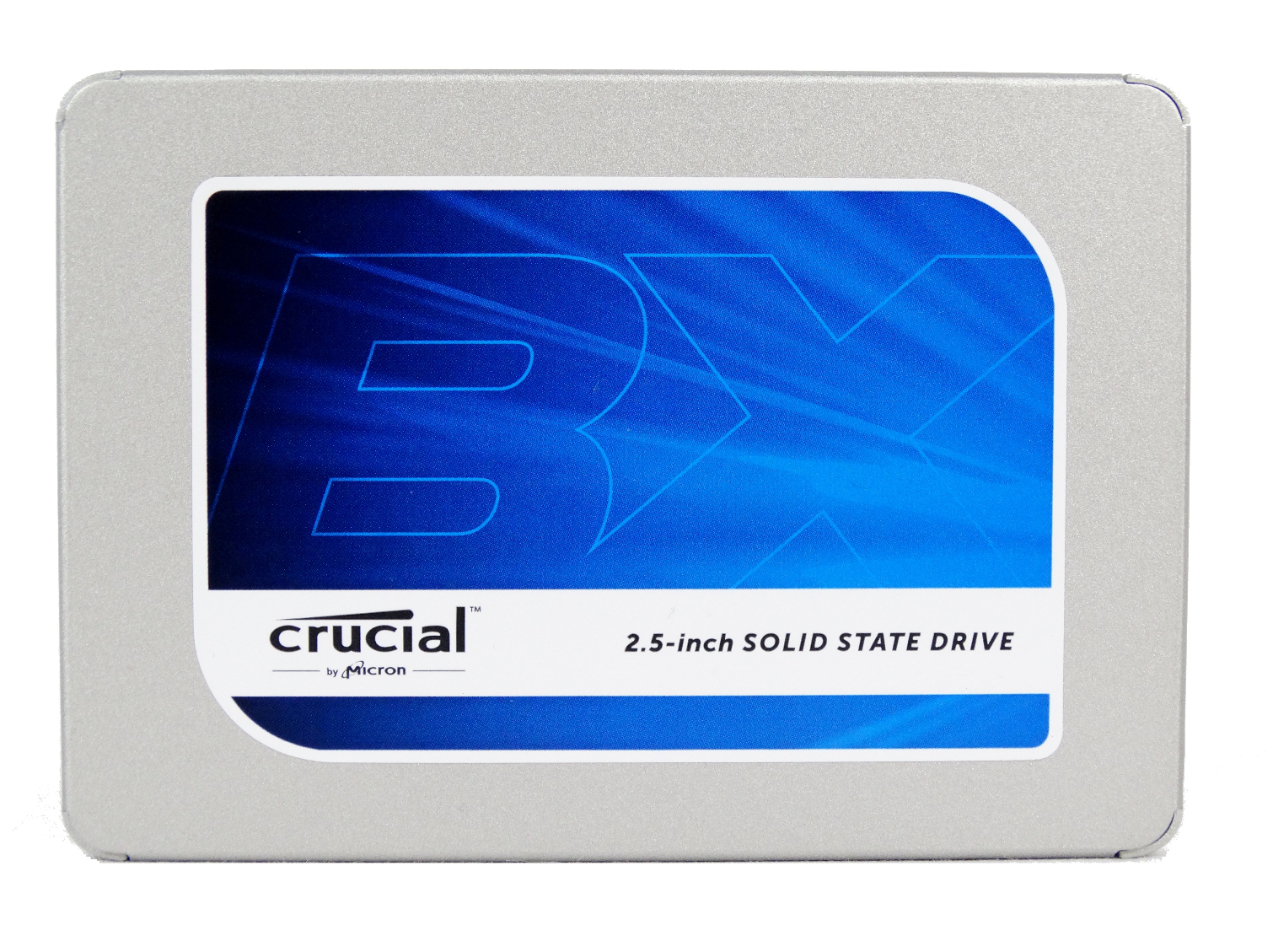
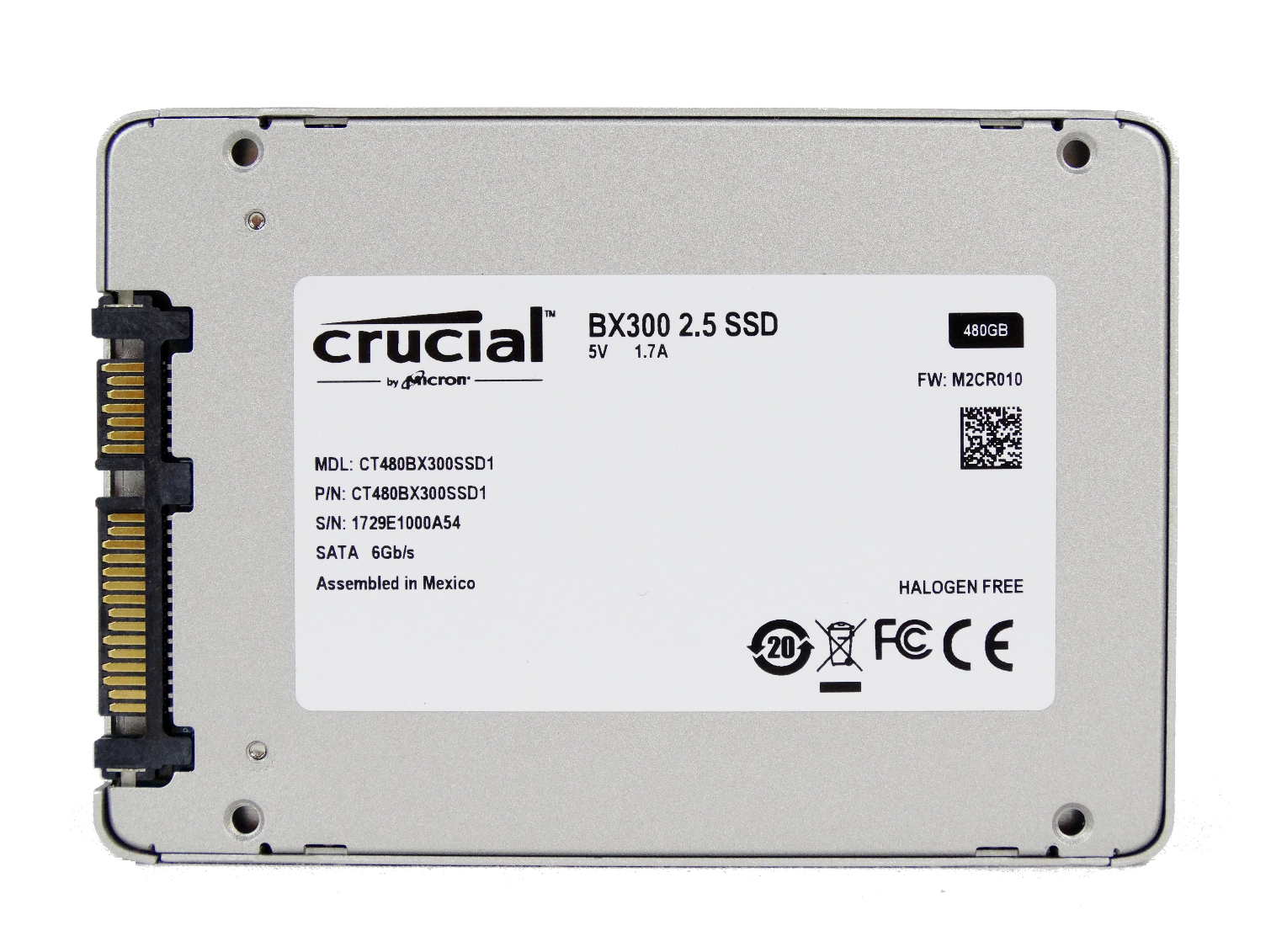
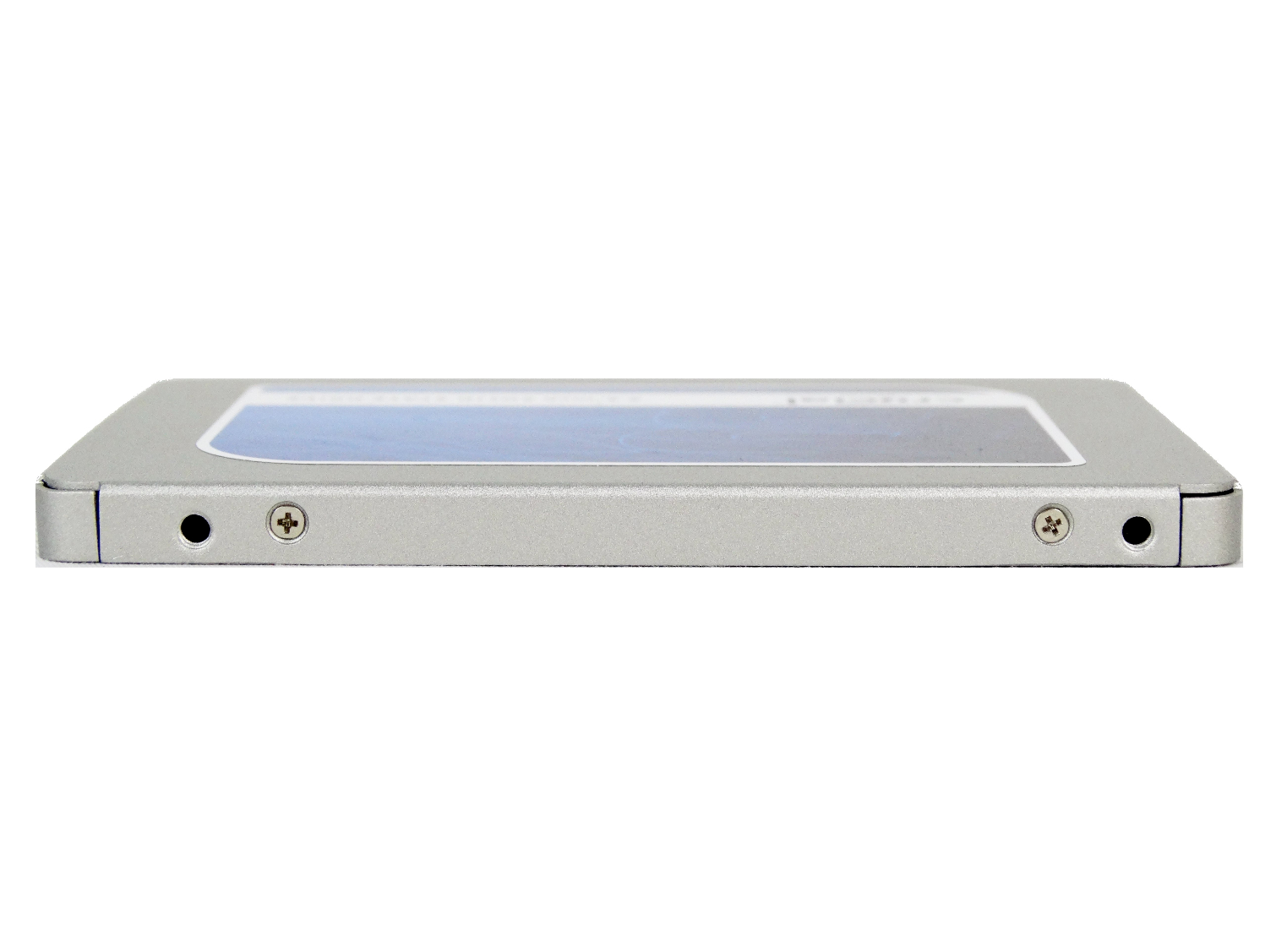
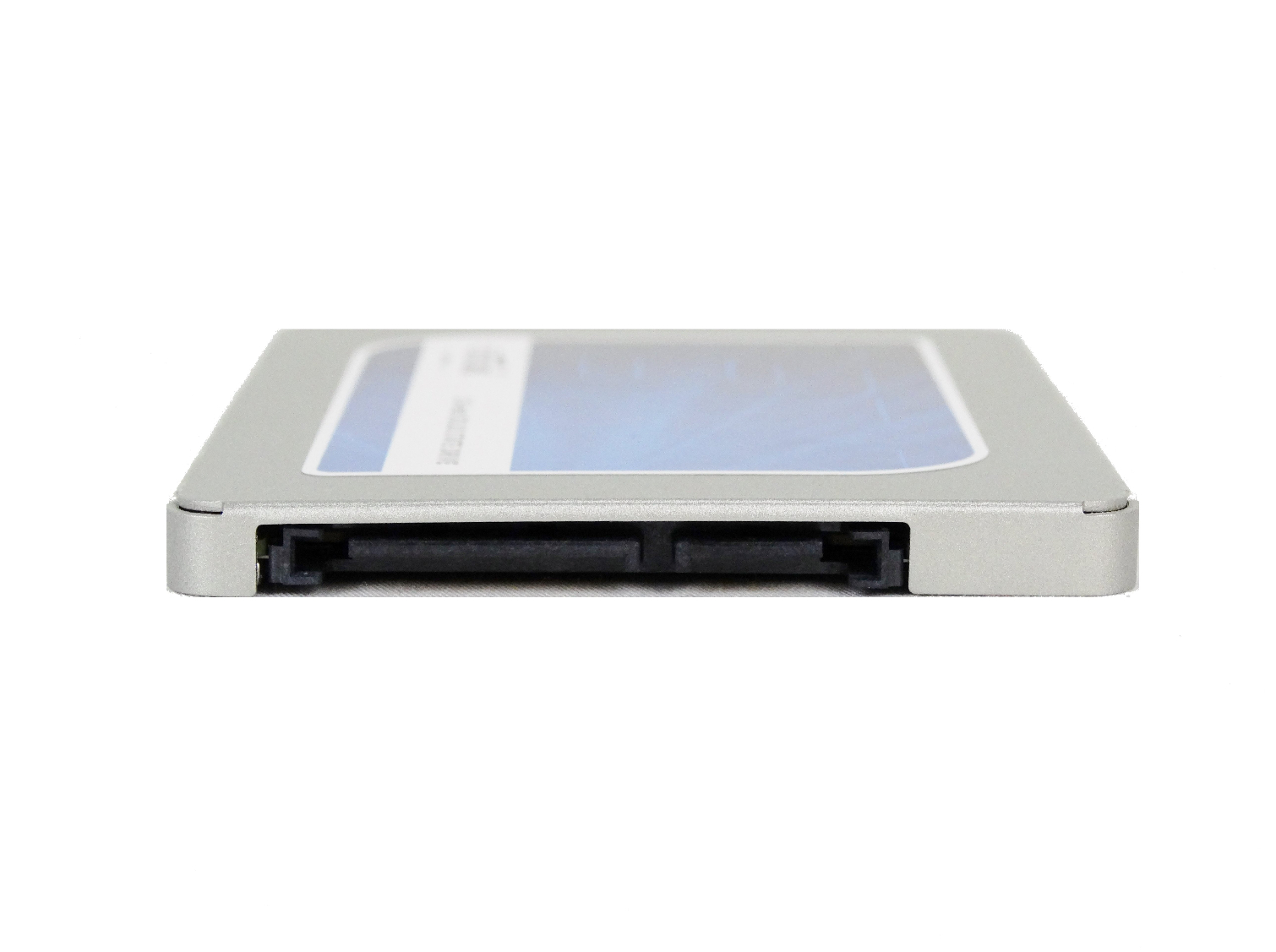
The overall design is also similar to Crucial's other SSDs. The BX300 features the industry standard 2.5-inch design with a 7mm Z-height (thickness).
The Tear Down
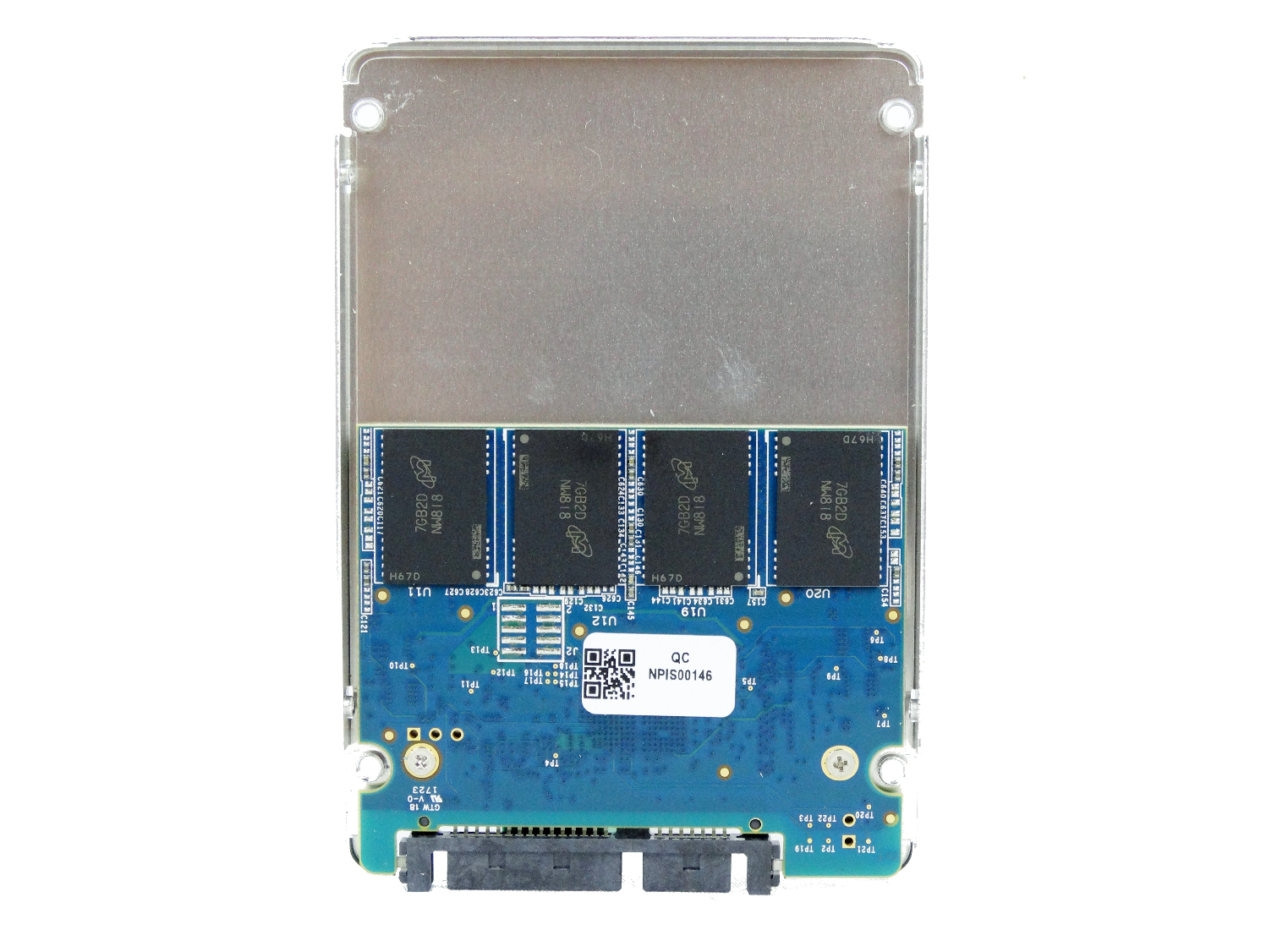
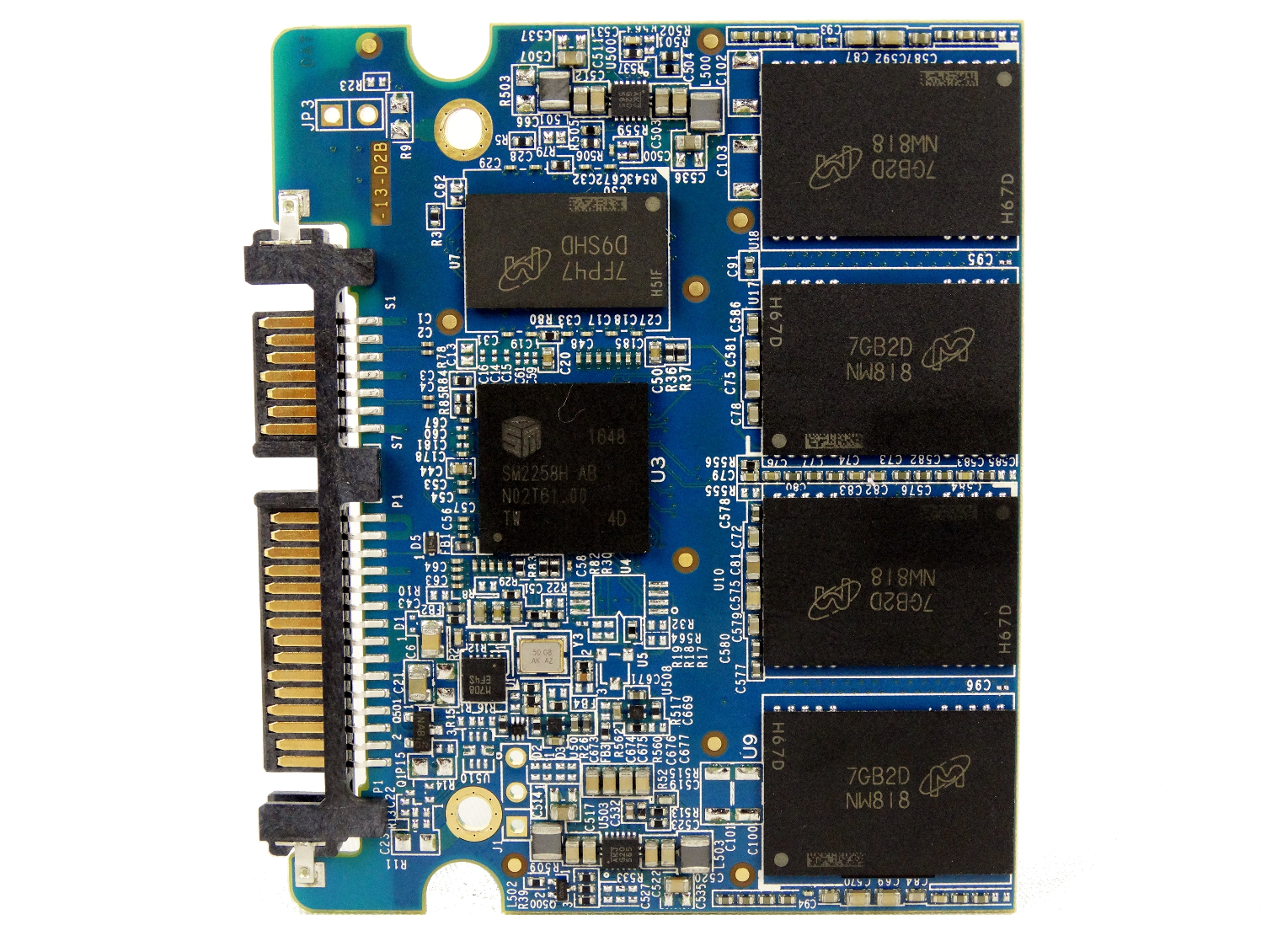
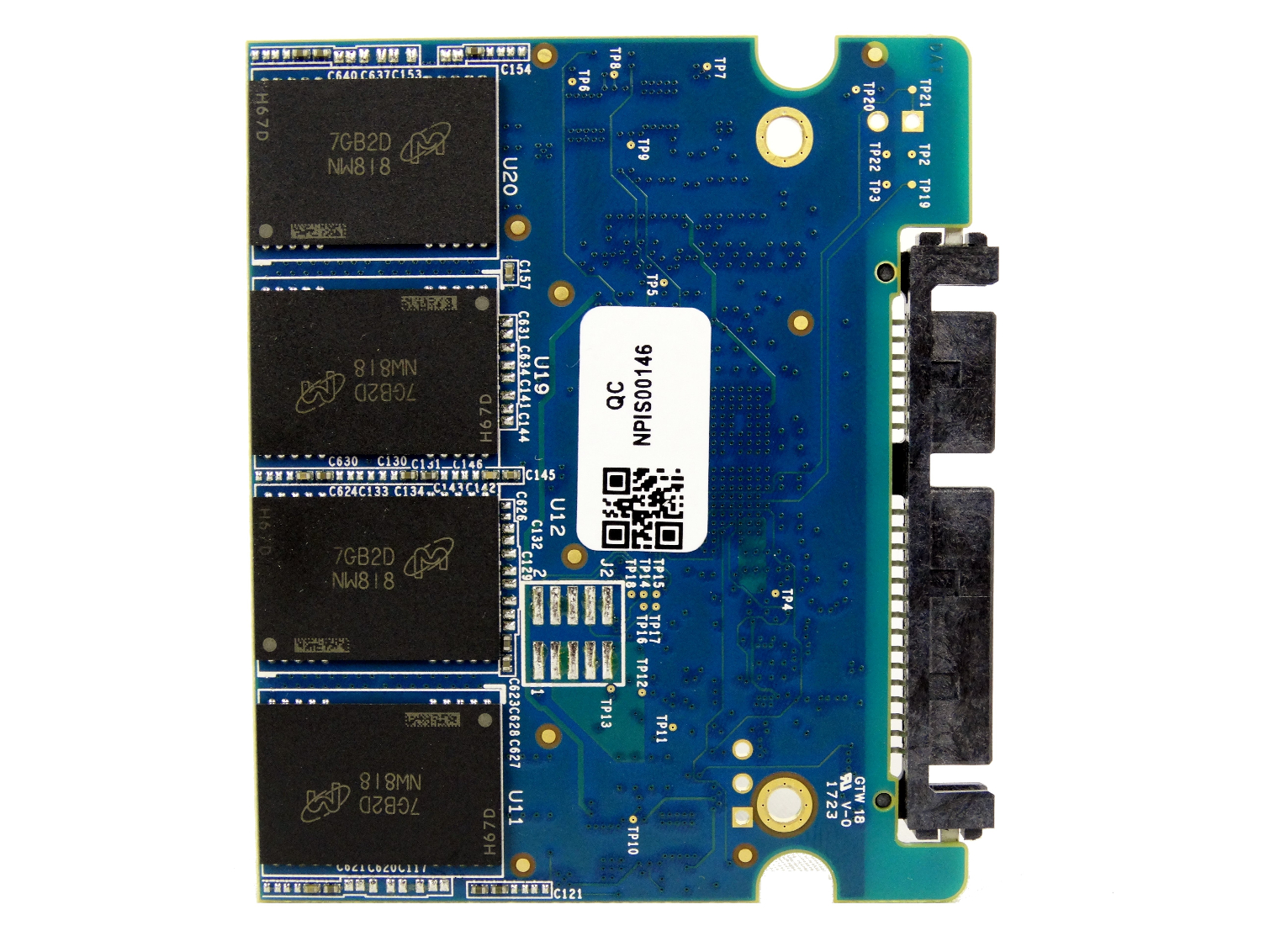
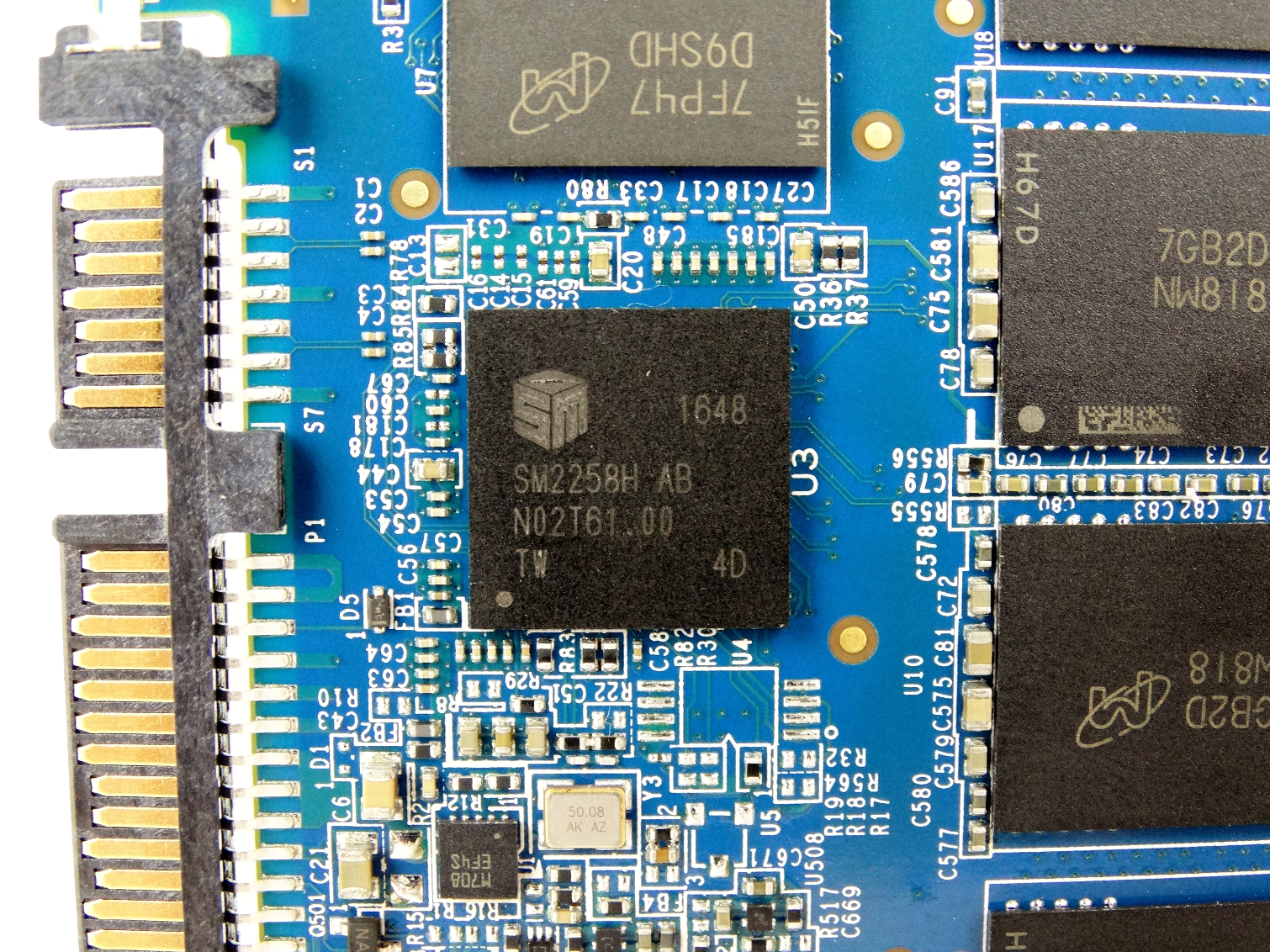
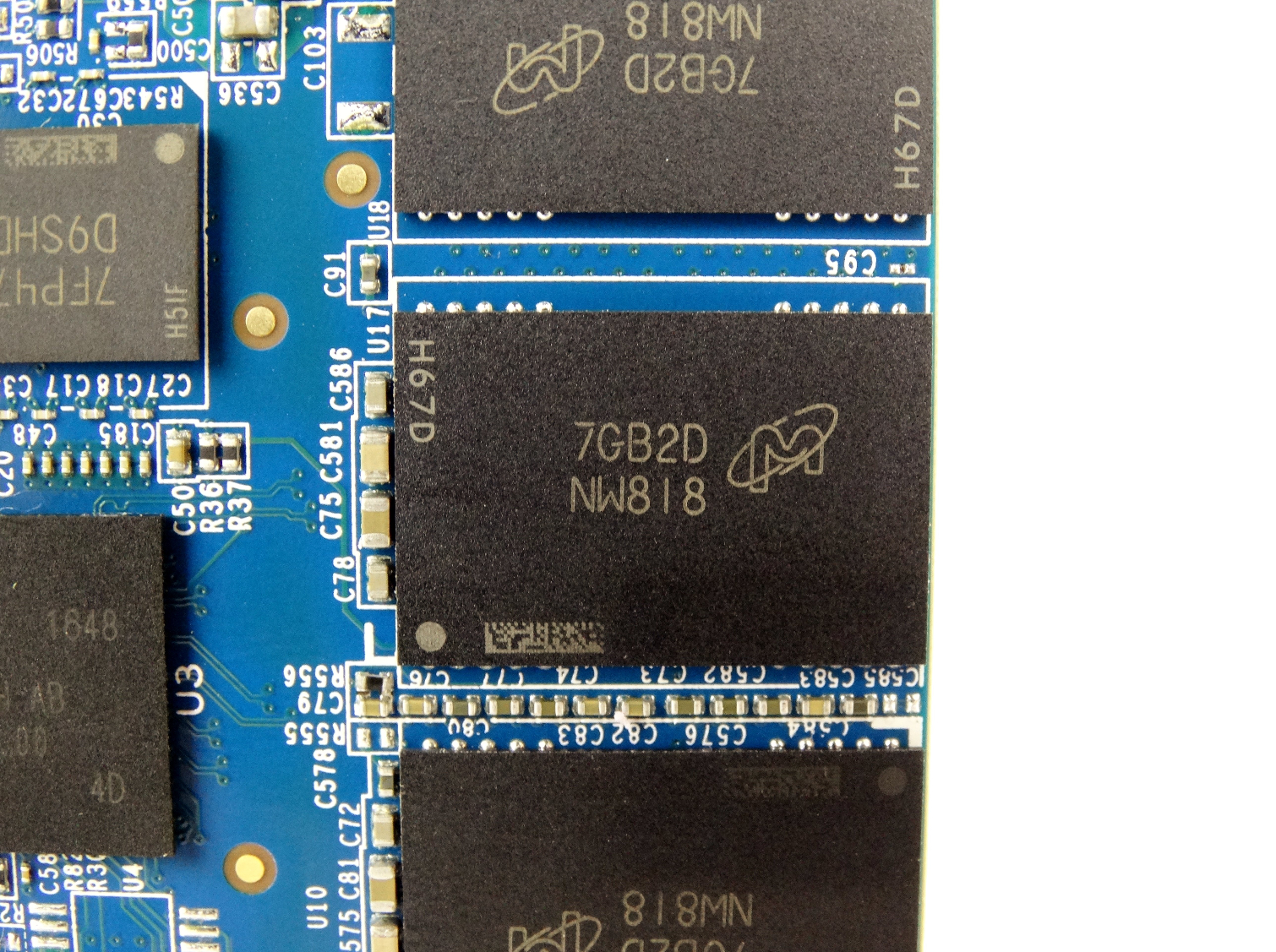
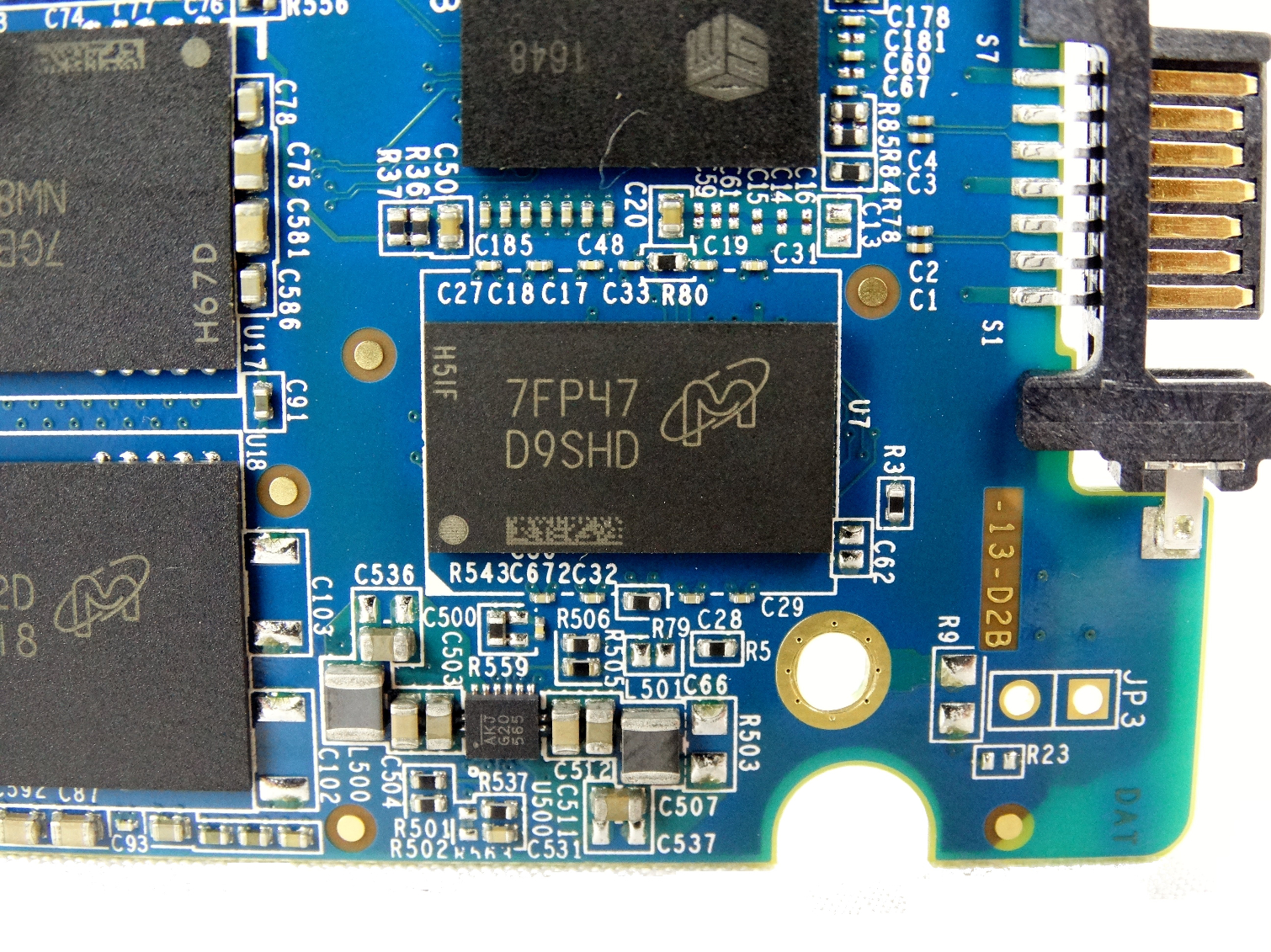
Inside, we found a half-length circuit board with the components configured in a tight arrangement. Crucial populates the 480GB's eight NAND pads with packages. The board only has one pad for a DRAM package, and that could limit our chances of seeing the BX300 come to market in higher capacities.
MORE: Best SSDs
MORE: How We Test HDDs And SSDs
MORE: All SSD Content
-
Rdslw Why they won't make HALF 2.5 drive ? A lot of SSD don't use this space at all and in laptops this means a lot of wasted space.Reply -
Snipergod87 Reply20116257 said:Why they won't make HALF 2.5 drive ? A lot of SSD don't use this space at all and in laptops this means a lot of wasted space.
There isn't an official standard as far as i know and anything with size constraints would get M.2 SSD's. That being said some OEM solutions use short length SATA SSD's but in a full length slot. -
mitch074 I'd love being able to directly compare these newer SSDs with older ones - I own a Crucial M500 480Gb, and I'd like to know how much better a replacement would be - not only in performance (enventhough mine is pretty much bottlenecked by the SATA port) but also in lifetime.Reply -
daglesj Dear Crucial, Just for Pete's sake bring back the BX100. It's really that simple. It was a great value and performing SATA SSD. Most people didn't need anything else. It just worked well.Reply -
garry.masters this report seems a bit out of alignment w other info regarding TLC MLC SLC I have read- it was my understanding that MLC offers more endurance and thus 'enterprise ssd' is usually MLC and that Samsung Pro is both faster and higher endurance due to MLC vs TLC NAND- so why is the endurance rating on this drive lower?. Also you seem to say this drive 'is taking a different path' from Samsung, but then say the Adata SU900 and XPG SX950 are essentially similar (is the 'different path' from THEM purely price?) Regardless- looks like a good product at a good price so will consider on my next purchase.Reply -
Nintendork MLC, Crucial, 3D?Reply
https://uploads.disquscdn.com/images/289a5318d82a512bfabf083eb76988bdd7e6b01394981a68706a27cb7a671926.jpg r? -
Nintendork GARRY.MASTERSReply
We can guess that with the example of the 850 pro, endurance ratings are just cosmetically reduced to not clash with enterprise class SSD's and affect sales.
And endurance test should not only be about filling/unfilling the SSD with 0-1's tools but tons of different archives with some of them remaining on the drive (40%) to test not only endurance but data retention for 1PB+ race. -
Rdslw Reply20116295 said:20116257 said:Why they won't make HALF 2.5 drive ? A lot of SSD don't use this space at all and in laptops this means a lot of wasted space.
There isn't an official standard as far as i know and anything with size constraints would get M.2 SSD's. That being said some OEM solutions use short length SATA SSD's but in a full length slot.
My laptop have m2 OR sata due to limited space. When I noticed those SSD's are smaller, I stripped the case and Guess what, there was space for both! :) sad that It took me ~6 months from buying to get to this idea. -
dark_lord69 Reply20116120 said:Crucial rethinks the transition to 3D TLC for all consumer SSDs and releases a brilliant entry-level product that takes aim at the dominant Samsung.
Crucial BX300 SSD Review : Read more
2.5" drives are standard for laptops.
M.2 drives are smaller
There are some smaller drives that SOME laptops used to use but today they are Obsolete.
1.8" 1.3" and 0.85" were smaller drives that are no longer used.
